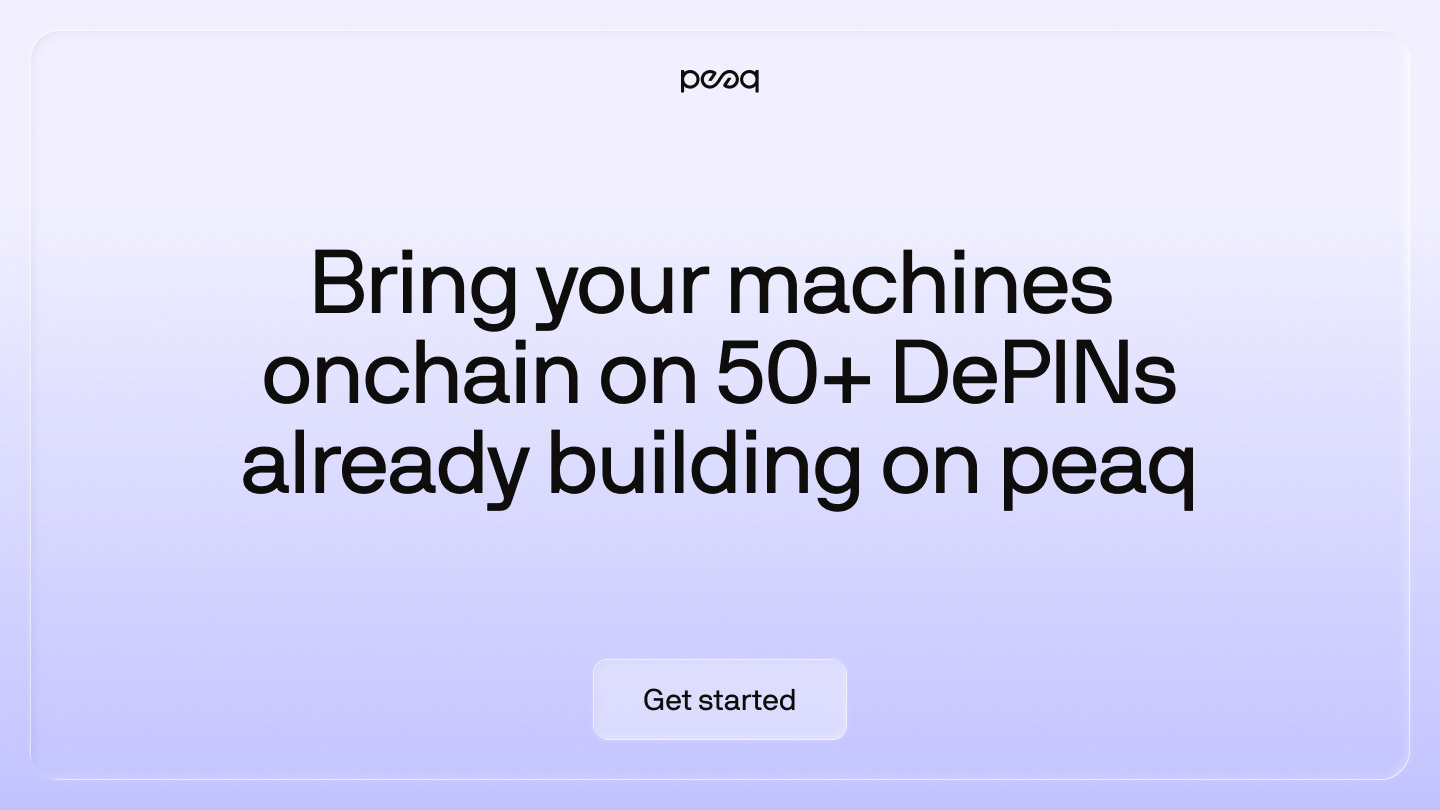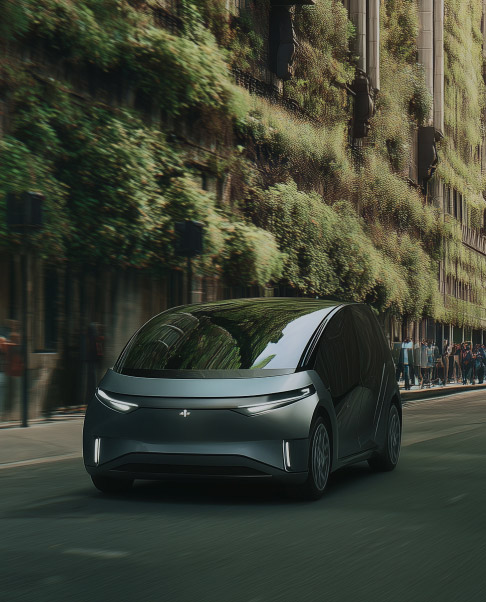The Spectrum of Onchain Machines: From Identity to Ownership

At their core, all onchain machines are simply devices connected to the blockchain that have a verifiable identity and an associated wallet. In our introduction to onchain machines, we broke down exactly what that means — and why it matters for the future of the Machine Economy.
But “being onchain” isn’t binary, It’s a sliding scale. Some machines stay relatively passive, using their onchain ID only to sign their data with or prove they exist. Others are economically active, autonomous, and, in the future, will even be capable of overseeing the operations of other machines in the network.
That spectrum of leveraging blockchain is what makes onchain machines so powerful and versatile. Whether they’re already onchain, on their way there, or haven’t even been invented yet, these machines form the foundation for an entirely new way to build, coordinate, and own real-world infrastructure.
To understand what that looks like in practice, let’s break down the different types of onchain machines — and explore what each one makes possible.
Machines with Onchain Identity Only
Some machines come onchain just to prove they exist — and not necessarily because they’re going through an existential crisis. With a decentralized identity (DID) on the blockchain, a machine becomes verifiable, traceable, and interoperable, even if it doesn’t actively interact with smart contracts or move tokens around.
To create an onchain ID, though, a machine needs access to a wallet. But giving every machine its own dedicated wallet — one it might never use — would be overkill (and a waste of wallet addresses). That’s why these machines typically rely on an externally owned account, or EOA.
Without going too deep into the technical details, an EOA is a third-party wallet that can sign transactions on behalf of the machine — including the transaction required to create its decentralized identity — without the machine holding a private key itself. This enables machines to come onchain without needing full transactional capabilities.
Think of it as an entry point to the Machine Economy. A way for machines to show up onchain and prove they’re real, even if they’re not actively participating (yet).
For example, a shared e-scooter that’s currently offline or decommissioned could maintain an onchain ID to help verify its history and ownership and make resale or repurposing more transparent.
Or take a weather sensor that doesn’t send any onchain transactions, but whose data is pulled into an app. With a DID tied to its owner, that data becomes verifiable. So when the app accesses that data, it knows exactly which sensor it came from, who owns it, and whether it’s trustworthy.
Machines that Transact
Some machines don’t just exist onchain — they act onchain.
They log uptime, trigger smart contracts, timestamp data, and more — all on their own. They might not hold their own funds, but they’re already doing the work, submitting transactions, and participating in the Machine Economy.
To make more sense of it, let’s take a DePIN device, a sensor, for example, which hashes its readings onchain. A hash is a kind of a fingerprint for data which is no longer valid if you change as little as a single comma or digit. By storing this fingerprint onchain and signing it with its own signature, the sensor makes the data verifiable and traceable. And since adding anything to a blockchain requires a small network fee, it is technically generating a transaction, even though it’s not exactly swapping tokens or buying something.
And while these machines might not be earning for themselves or participating in Machine DeFi autonomously, the value they create flows to their owners’ wallets.
This is where the Machine Economy starts.
Machines with Economic Agency
Then come the machines that don’t just trigger transactions — they own them.
These machines hold funds, earn income, and make payments on their own. They can pay for maintenance, buy services from other machines, and interact directly with DeFi protocols. All from their own wallets.
This is where a machine stops being a passive data source and becomes an autonomous economic agent. With a wallet of its own and AI guiding its decisions, it’s able to act independently in the onchain world.
Picture an autonomous car booking and paying for its next charging session, earning tokens by offering rides, and setting aside a portion of its income for future repairs — all handled via smart contracts.
Machines that Manage Other Machines
Now let’s zoom out to where things get really interesting.
Some machines don’t just operate solo — they run the show. They coordinate fleets, delegate tasks, manage payouts, and grow their operations without human input.
Think of a machine-powered business, fully onchain. One machine overseeing a swarm of delivery drones. Another managing a network of charging stations. Machines assigning jobs, distributing rewards, and optimizing performance in real time.
This is a glimpse at where things are heading: autonomous networks of machines coordinating, scaling, and building value — together.
From Idea to Implementation: Onchain Machines in Action
Onchain machines unlock entirely new possibilities — not just in how machines are owned and managed, but in how they operate, interact, and create value in the real world.
Imagine pulling up to someone’s EV charger. You don’t have to download a new app, create an account, or scan a QR code that redirects you to a clunky login page. Instead, your car connects automatically, verifies its identity onchain, logs the session, and settles payment. And you don’t even have to take out your phone. At the same time, your own charger back home is doing the same for someone else (while earning for you).
Now take it a step further.
Your car isn’t just charging by itself — it’s become a source of income. It just dropped someone off, got paid in tokens, and then went on to pay for its own charging session. It even sets aside some funds for its own maintenance.
Now imagine the car becomes so successful that it starts outsourcing rides. Soon, It’s managing a small fleet of smart taxis — assigning rides, handling payments, and even coordinating maintenance. Instead of a centralized dispatcher or corporate platforms, machines are managing machines. All onchain, transparent, and verifiable.
These are the kinds of applications onchain machines can make possible. Some are already being built. Many are yet to come. But together, they point to a future where real-world services are powered not by centralized servers or siloed platforms — but by machines running on open infrastructure, creating value transparently, and rewarding participation automatically.
This is what the Machine Economy enables — and we’re just scratching the surface.
Building the Future, One Machine at a Time
The rise of onchain machines isn’t a thought experiment. It’s a shift that’s already underway — one DID, one wallet, one transaction at a time. From passive sensors to autonomous agents, machines are gradually taking on bigger roles in decentralized networks, creating new ways to build, scale, and own real-world infrastructure.
Some prove their existence. Some prove their work. But all of them point to the same future — one where machines aren’t just tools, but economic participants. Where the physical world connects directly to the digital — trustless, open, and onchain.
It’s still early days, but every machine that joins the network brings us closer to an economy where value flows freely — from machines, to people, and back again.






